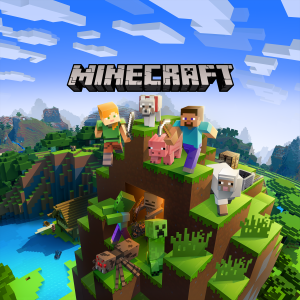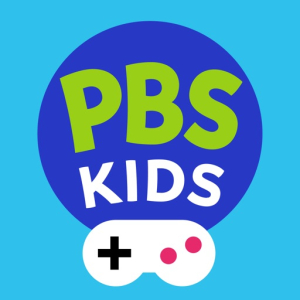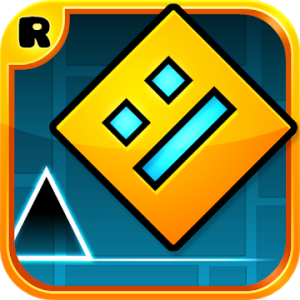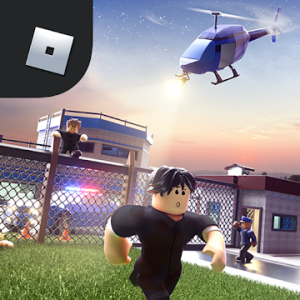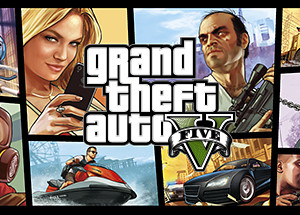Split Fiction
Split Fiction review
My First Encounter with Split Fiction
I remember the day I first stumbled upon Split Fiction as if it were yesterday. Wandering through digital platforms in search of a fresh and compelling experience, I was instantly drawn to this game by its intriguing title and captivating artwork. From the moment I downloaded the game, my excitement was palpable, and I knew I was about to embark on an unforgettable journey. My curiosity was fueled by a promise of a narrative that not only challenges whether I could navigate its complex gameplay but also my understanding of interactive storytelling.
The initial moments of playing were a mix of gentle orientation and energy that subtly hinted at the rich narrative layers to come. I immediately noticed that this game was not a run-of-the-mill project; every detail was meticulously crafted to invite both casual players and those hungry for an immersive experience. As I took my first steps inside its virtual world, I felt as though I was simultaneously opening a book and diving into a living, breathing story.
The Narrative and Storytelling Mechanics
The narrative structure of Split Fiction is an intricate tapestry woven with threads of mystery, adventure, and emotion. I quickly discovered that every element, from background lore to character dialogue, was designed to engage me fully. Storytelling in this game is not merely about a conventional progression of events; it is built on the idea of splits in narrative choices, where each decision paves the way for divergent storylines.
What fascinated me most was how the narrative dictated that my choices had tangible effects on both the storyline and the world around me. Every conversation had weight, every hidden clue altered my perspective, and every twist in the plot deepened my engagement with the game’s universe. This constant interplay between narrative and mechanics created an environment where I not only felt like an observer but also a significant contributor to the unfolding drama.
The mechanics that controlled these narrative shifts were smooth and intuitive, making it effortless to guide my character through decision-making moments. It was evident that the developers had spent considerable time fine-tuning the dialogue options and branching paths to ensure that the storytelling was both reactive and proactive. Even small interactions, such as brief remarks with supporting characters, unfolded into important narrative arcs that left me pondering their implications long after the moment had passed.
Engaging Gameplay Dynamics
Delving deeper into the mechanics, I found that the gameplay dynamics of Split Fiction struck a perfect balance between action and strategic decision-making. The game seamlessly integrates exploration with moments of high tension where quick thinking is paramount. As my journey progressed, I encountered challenges that were not solely dependent on reflexes but also required me to carefully assess my environment and plan my moves.
The variety offered in gameplay was a highlight. There were segments that demanded agility and tactical planning as I navigated treacherous terrains and confronted formidable adversaries. These encounters pushed me to refine my approach continuously. At the same time, quieter moments of reflection allowed me to adjust my strategies and dive into the rich lore embedded in the game’s world.
This balancing act between thrill and thoughtfulness kept me on my toes. I never felt overwhelmed because the game offered comprehensive tutorials and subtle hints that gently nudged me in the right direction whenever I seemed stuck. The experience was both challenging and fair, making every victory feel earned and every misstep a chance to learn and adapt.
Exploring the Immersive World
The world-building in Split Fiction is, without doubt, one of its most mesmerizing aspects. As I journeyed through varied landscapes—from eerie, abandoned towns to lush, vibrant environments—I was captivated by the beauty and detail of each setting. Every location had a personality of its own; each scene evoked emotions ranging from nostalgia to suspense, and sometimes even sorrow.
One of the most striking features was the attention to the smallest details. Ambient elements like drifting fog in dark alleyways or the sudden gusts of wind that rustled through dense forests contributed significantly to the atmosphere. I deeply appreciated how these environmental nuances were not just aesthetically pleasing but also served to underline thematic elements of the storyline.
Moreover, the game world was filled with hidden areas that only the most observant players could unearth. I spent hours meticulously exploring every nook and cranny, feeling rewarded with tidbits of lore that enriched the broader narrative. The design philosophy behind these spaces clearly demonstrated that the developers intended the world itself to be a character in the story, silently narrating its own tale through symbols, textures, and ambient sounds.
Customizing My Experience
Split Fiction provided me with a degree of personalization that set it apart from many other titles. I was particularly impressed by the level of choice available in customizing my character. From aesthetic choices like clothing and gear to tangible gameplay adjustments that affected my skill set, the customization options allowed me to tailor the experience to suit my playstyle and taste.
This aspect of the game made each session feel unique and personal. It was gratifying to know that my journey was distinctly mine and that every decision I made not only influenced the narrative but also the mechanics. I found the process of gradually upgrading my abilities and refining my strategy to be immensely satisfying, and I often spent extra time exploring different builds and configurations.
The game encouraged experimentation without forcing me into any clear-cut paths. I could shift between combat strategies or even explore facets of the game that I might have initially overlooked. This high degree of player agency enriched my connection with Split Fiction, making every exploration of its systems feel like a rewarding discovery.
Diving into the Combat Arrangements
The combat sequences within Split Fiction were carefully designed to challenge both my strategic thinking and reflexes. Rather than overwhelming me with mindless sequences, each skirmish was layered with tactical depth. I had to adjust my timing and positioning continuously, making split-second decisions that could dramatically alter the outcome of an approaching encounter.
What stood out in these segments was the focus on satisfying execution over speed. The combat system was rich with nuance, offering a variety of techniques and maneuvers that catered to differing playstyles. I found that experimenting with different approaches not only kept the battles fresh but also allowed me to slowly master the subtleties of the mechanics.
The interplay between offense and defense added another layer of polish. There were moments when I had to carefully shield myself from oncoming challenges and then transition into a counter-response that could decisively subdue my adversaries. Each victory came after a thoughtful coordination of resources and a clear understanding of the enemy's patterns. I admired how balanced the system was, encouraging thoughtful play rather than relying on repetitive mechanical inputs.
Visual and Aesthetic Brilliance
Immediately upon launching Split Fiction, I was drawn into its visually arresting world. Every scene seemed to be a piece of art, with lighting, color schemes, and shadow play used expertly to evoke emotions and guide my focus. I spent many long sessions simply admiring the intricate graphics that breathed life into the digital realm I was traversing.
One of the elements that truly captivated me was the fluidity of character animations and environmental effects. The moments of motion—whether it was a character traversing a narrow alleyway or the delicate sway of distant trees—were rendered in such a way that the experience felt natural and immersive. I found myself pausing the game just to appreciate the detailed artistry that had gone into every frame.
The interface was minimalistic yet informative, ensuring that I was never distracted from the core experience. Information such as health and skill indicators was integrated seamlessly into the design, remaining unobtrusive but always available when necessary. The balance between dynamic visuals and a user-friendly layout made the overall aesthetics of Split Fiction one of its most commendable qualities.
Sound and Ambient Experience
The auditory landscape of Split Fiction is a masterclass in creating atmosphere. I was immediately enticed by the careful selection of soundtracks and environmental audio cues that enhanced my immersion. Every note composed for the background music was thematic, perfectly complementing the mood of the various segments of the game.
What I particularly enjoyed was how the sound design changed dynamically in response to my actions; quiet ambient chords would swell into tense compositions during moments of suspense, and light, cheerful melodies would accompany exploratory periods. This responsiveness created an audio narrative that paralleled the unfolding story, ensuring that I was fully engaged on multiple sensory levels.
Even the smallest audio details, such as the rustling of leaves or the distant echoes in enclosed spaces, were given thoughtful attention. I often found these subtle sounds were as vital as any overt musical score, cementing my connection to the environment and drawing me deeper into its immersive ambiance.
Innovative Puzzle Design and Problem-Solving Elements
Alongside the rich narrative and dynamic gameplay, Split Fiction introduces an innovative array of puzzles and problem-solving tasks that continually challenged my intellect. Each puzzle was carefully integrated into the narrative, not simply as a pause for action but as a core element of the unfolding story. These challenges required me to think outside the box and approach problems from multiple angles.
The puzzles varied in complexity—from deciphering ancient symbols to reordering fragmented clues scattered across the world. I found joy in interlinking these challenges with the game’s lore, as each solved puzzle unlocked new insights into the overarching narrative. The satisfaction derived from piecing together clues and overcoming these challenges made every moment spent in deep thought truly worthwhile.
Furthermore, the design of these puzzles was presented in a way where trial and error were encouraged. The environment often hid subtle hints that guided my approach without offering outright answers. This balance between the freedom to experiment and the reward of discovery had me constantly engaged, forcing me to adapt my strategies based on the unique conditions of each puzzle.
Social Interactions and Multiplayer Layers
Split Fiction does not isolate players in a solitary experience; it also weaves in complex social interactions that enrich the narrative through the inclusion of a dynamic multiplayer component. When I first encountered the multiplayer layers, I was impressed by the seamless integration of social elements with the single-player narrative. This ensured that my interactions with other players felt both spontaneous and consequential.
The social dynamics extend beyond simple communication. I had opportunities to form alliances on shared missions, participate in community events, and even engage in competitive challenges that tested both my skills and my ability to collaborate with others. These interactions not only added depth to the experience but also introduced a vibrant community where every player had a role in enhancing the universe of Split Fiction.
For me, this blend of narrative and social connectivity created a unique form of gameplay. Engaging with others in thoughtful dialogue or cooperative problem-solving sessions often opened doors to secret narrative branches that would otherwise remain hidden. The game continuously reminded me that while my journey was personal, it was also part of a larger, interconnected experience.
Crafting an Emotional Connection
There is an undeniable human element that runs through every facet of Split Fiction. As I navigated through its intricate storyline and challenging mechanics, I found myself forming a deep emotional bond with both the characters and the world around me. Each interaction, each fleeting moment of vulnerability in dialogue, resonated on a level that went beyond mere gameplay.
I especially appreciated the way the game juxtaposed moments of triumph with periods of introspection. The narrative did not shy away from complex emotions, and I was often moved by scenes that captured joy, despair, hope, and regret in equal measure. This careful attention to emotional storytelling made the experience genuinely engaging, forging a continuous connection between me and the evolving narrative.
The character development throughout the game was equally noteworthy. I found that even supporting characters had journeys of their own, and their stories intertwined organically with mine. As I witnessed their struggles and triumphs, I felt a sense of responsibility to honor their contributions to the larger tapestry of the game’s universe. The emotional depth present in every narrative arc ensured that my journey was felt on both an intellectual and a visceral level.
Adaptive Difficulty and Smart Challenges
One facet of Split Fiction that truly impressed me was its adaptive difficulty system. The game intelligently adjusted the complexity of its challenges based on my evolving playstyle and skill level. I noticed that early on the gameplay gradually increased in difficulty without ever feeling out of reach, a careful balance that kept me engaged without overwhelming me.
This adaptive system was not just about providing hurdles; it also offered useful tools and hints to help me navigate particularly tricky segments. There were moments when the game stepped in to assist, offering contextual advice that was both helpful and unobtrusive. I always felt that the system was pushing me to improve, but not penalizing me harshly for my missteps.
The constant calibration of challenges meant that even when I was deep into the game, there was always a new test waiting around the corner—sometimes in a puzzle, sometimes in a complex combat scenario. This steady progression ensured that my interest never waned and that every session added something new to my overall experience.
Interactive and Evolving Environments
What I appreciate most about Split Fiction is the level of interactivity embedded into its myriad environments. It is not just a static backdrop for storytelling; instead, the world around me constantly evolved as I explored and innovated. I spent countless hours interacting with objects, deciphering environmental cues, and uncovering secret passages that revealed layers of hidden history.
The environmental interactions were multi-dimensional. Whether I was using levers to open concealed pathways or combining scattered items to solve intricate challenges, each interaction felt meticulously designed and rewarding. I admired how these mechanics were implemented in a way that never broke immersion, making every action feel purposeful and integral to the ongoing narrative.
Furthermore, the game often let me witness tangible changes in its world as a consequence of my choices. This dynamic evolution of the environment—such as shifts in lighting, transformations in character expressions, or even the subtle alteration of background details—reinforced the idea that my actions truly mattered. It was a gratifying experience of seeing the digital world respond and adapt in real-time, reflecting the ripple effects of each decision I made.
Pros:
- Immersive narrative with branching storylines
- Dynamic and evolving environments that respond to player choices
- Engaging combat system that rewards tactical decision-making
- Extensive customization options for characters and gameplay
- High-quality audio-visual design that enhances the atmosphere
- Innovative puzzles that integrate seamlessly with the narrative
Cons:
- Steep learning curve for newcomers
- Occasional pacing issues during narrative transitions
- Some narrative branches may feel less impactful than others
Graphics 4
Gameplay 3
Controls 5
Replay Value 5
How much storage do you need?
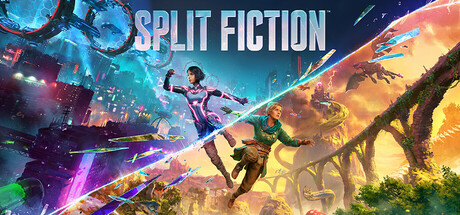 Split Fiction
Split Fiction RELATED APPS
Best Games
NEW APPS
LATEST ARTICLES
- Journey to The Artist: Navigating Mystery, Landmarks, and the Chiral Network in Death Stranding 2 The immersive world of Death Stranding 2 invites players to explore uncharted territories and engage with unique characters, each offering...
- Lotta Tuulola
- 2025-12-21 05:04:12
- Digital Football's Next Frontier: A Mobile Revolution Ahead of 2026 An unexpected twist in global affairs of digital football gaming now sees a major entertainment company joining forces with the...
- Jasmine Adams
- 2025-12-21 05:04:10
- Beyond the Knock: Unraveling the Secrets of OD's Dark Innovation The renowned game designer explains that his upcoming project, OD, represents a unique technology and is built upon an entirely...
- Kristiina Hanski
- 2025-12-21 05:04:09
